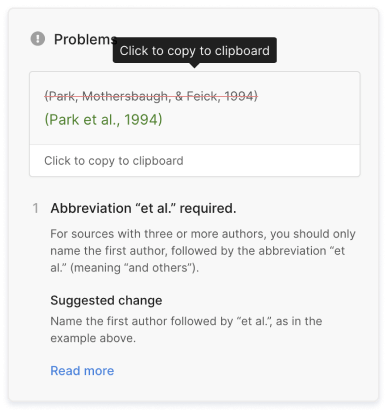Personal Communications in APA Style | Format & Examples
In APA Style, a personal communication is any source that is not accessible to your readers. Personal communications are cited in the text, but not included in the reference list.
Example
Another researcher stated that the results so far looked “very promising” (A. Smith, personal communication, July 15, 2015).
What is a personal communication?
A personal communication is any source you refer to that the reader will not be able to access—either because it was not recorded, is deliberately kept private for reasons of confidentiality, or is accessible only to a specific group (e.g. members of a particular institution or online community).
Because the reader cannot look up these sources independently, APA Style states that it is not appropriate to include them in a reference list. The point of a reference list is to allow the reader to find your sources, so inaccessible sources do not belong there.
Some common examples of sources that should be treated as personal communications include:
- Private conversations, emails, letters and messages
- Private social media content
- Unrecorded performances and speeches
How to cite personal communications
When citing a personal communication in your text, you only need to give the person’s initials and last name, the words “personal communication,” and the date of the communication in parentheses:
If it’s relevant or important to the reader’s understanding, you can specify the type of communication involved:
Private messages on social media are always personal communications. Other social media content should also be cited as personal communication if it is not public – that is, if it can only be accessed by members of a specific group or friends of a specific user:
Quoting your research participants
Quotes from your research participants, such as interviewees and survey respondents, are treated slightly differently from personal communications.
You don’t need to include a citation when quoting your research participants, but the transcript or responses you’re quoting from should usually be included in an appendix. Just refer to this appendix the first time you quote from it, e.g. “(See Appendix A).”
Research participants are often anonymized for reasons of confidentiality. There are several ways of handling this. Where it is not important to distinguish participants from each other, you can simply refer to them without any specific attribution:
Where more detail is appropriate, you might want to distinguish participants by personal characteristics like age, profession, or gender:
Where it’s important to be able to refer to specific participants, you can use false names (as long as you clarify somewhere that this is what you’re doing) or numerical/alphabetical labels:
Frequently asked questions about personal communications
- Should interviews be included in an APA reference list?
-
Interviews you conducted yourself are not included in your reference list, but instead cited in the text as personal communications.
Published or recorded interviews are included in the reference list. Cite them in the usual format of the source type (for example, a newspaper article, website or YouTube video).
- What types of source are cited as a personal communication in APA Style?
-
In APA Style, all sources that are not retrievable for the reader are cited as personal communications. In other words, if your source is private or inaccessible to the audience of your paper, it’s a personal communication.
Common examples include conversations, emails, messages, letters, and unrecorded interviews or performances.
Cite this Scribbr article
If you want to cite this source, you can copy and paste the citation or click the “Cite this Scribbr article” button to automatically add the citation to our free Citation Generator.
Caulfield, J. (2023, December 27). Personal Communications in APA Style | Format & Examples. Scribbr. Retrieved April 22, 2024, from https://www.scribbr.com/apa-examples/personal-communication/


